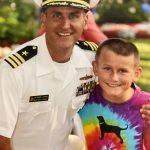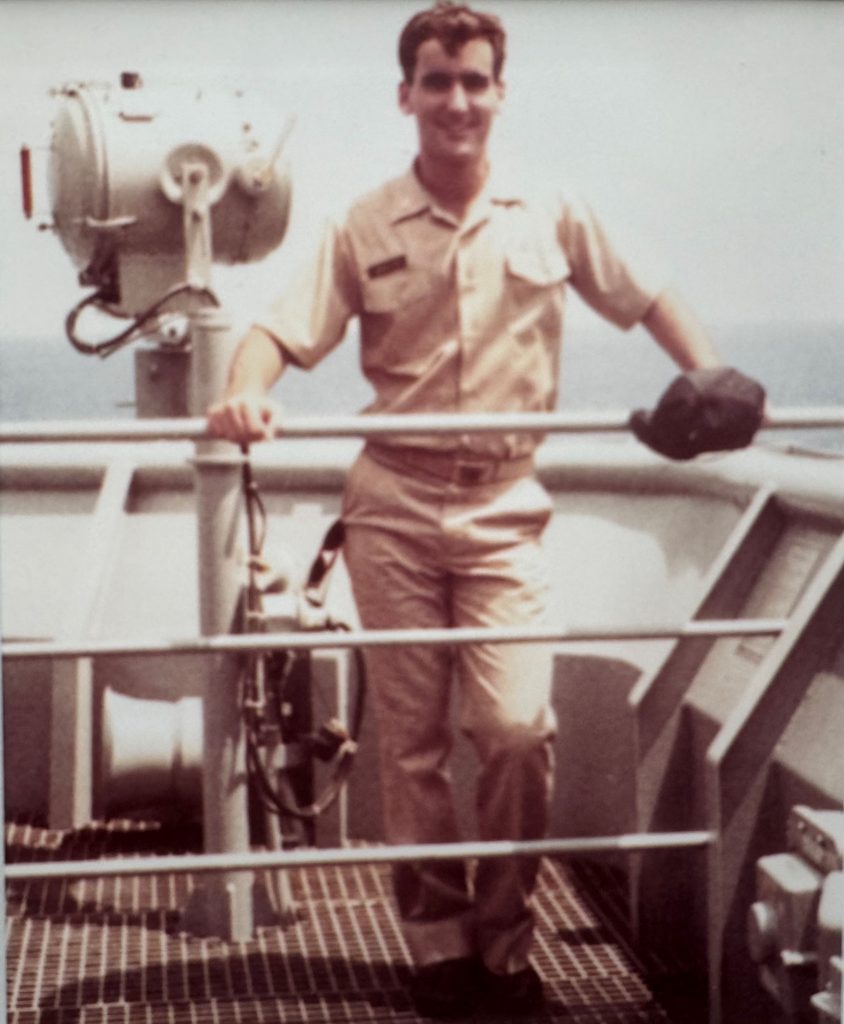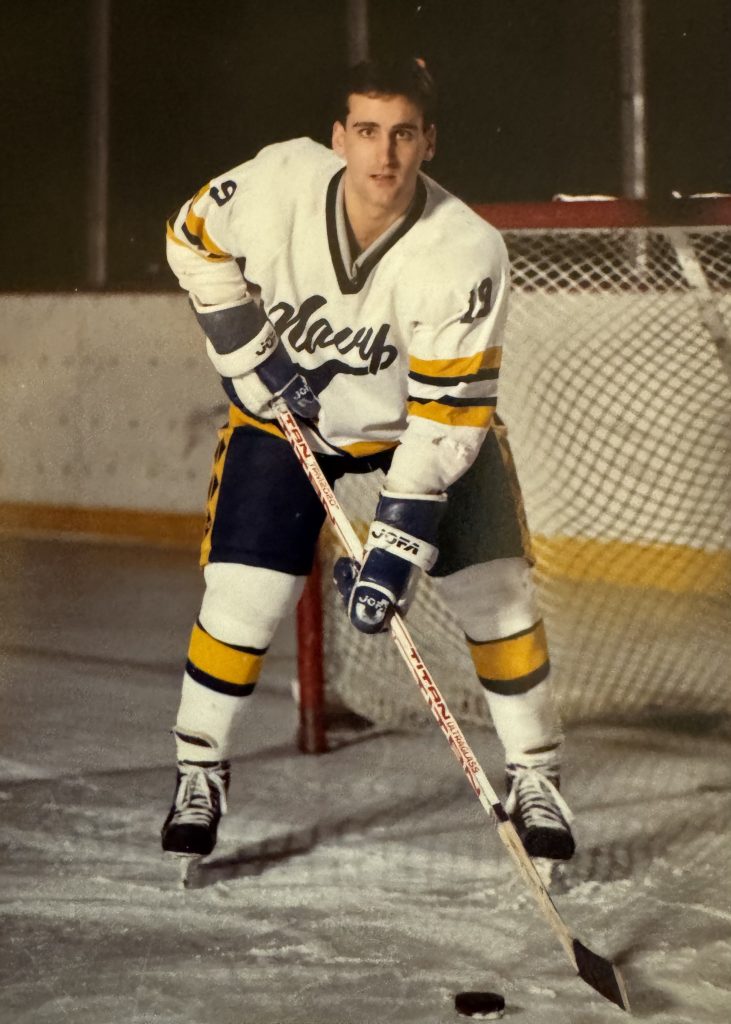
We are especially thankful and proud to employ many veterans in our company and throughout our fleet. Their brave service and sacrifice to our country is admirable and awe-inspiring.
In honor of Veteran’s Day today, we are highlighting one of their stories.
Meet Patrick Murray, U.S. Navy Veteran
Following in the footsteps of family members and being encouraged by them to join the military is what initially sparked Pat Murray’s interest in the Navy.
“My father served aboard a Navy ship as a naval officer during the Korean War and he always spoke fondly of his experiences in the service,” says Murray, who now works as Interlake’s Operations Manager at the corporate headquarters outside of Cleveland. “I always enjoyed listening to his many sea stories. I also had an uncle who served for a full career as a Navy Chaplain. When I was a kid, we had a chance to visit him at the Naval Academy, in Annapolis, MD on several occasions. Those visits were very memorable, and I knew at an early age that I wanted to go to the Naval Academy someday.”
Murray’s family has always valued military service, and that legacy of service continues today. He has one son who is a civilian engineer working on important Department of Defense projects for the Navy and Air Force, and another son who is a Marine Corps 2nd Lieutenant. He also has three nephews who are naval aviators.
After graduating from the Naval Academy in 1988, Murray had an expansive 25-year career in the Navy, first as a Surface Warfare Officer, serving as the Navigation Officer and Operations Officer on an LST (landing ship, tank).

“That was a very busy time for our country, and I found myself deployed for long periods, during and after the First Gulf War,” he says. Following those deployments, he opted for shore duty, and headed back to the Naval Academy to teach leadership, navigation, and seamanship courses for a few years.
“While I was there, I became a Naval Oceanographer and got married to my wife, Stacey. We decided as newlyweds that it would be fun to see the world together as a navy family,” he says.
Their travels took them first to Pearl Harbor and then to Monterey, California, where he went to school to get a master’s degree in meteorology and oceanography. The couple had their first son, Jack, while they were there. They went on to San Diego, where their second son, Sam, was born.
“My tour in San Diego was another highlight of my career. I was assigned as the Battlegroup Oceanographer and Scheduler on an admiral’s staff that was embarked on an aircraft carrier,” he says. “We deployed on short notice in response to the September 11 attacks, and we quickly found ourselves involved in airstrikes in Afghanistan and in multi-national maritime operations in the Arabian Gulf, for many months.”
When he returned home, the family moved to Washington, D.C., and he worked for the Naval Oceanographer, the admiral in charge of Naval Oceanography. It was during that tour that Murray was selected to become a commanding officer, and the family moved again, this time to Yokosuka, Japan where he would lead Naval Oceanography’s only overseas command.
“During that tour we changed the mission of the organization from being a regional weather station into a tactically focused antisubmarine warfare (ASW) unit, developing ASW capabilities and embedding ourselves within organizations tasked with finding adversarial submarines,” he says.
With their boys in school at this point, they decided it was time for him to start thinking about winding down his career in the Navy. They went back to Annapolis where he became an academic administrator in the Naval Academy’s Mathematics and Science Division, and teaching courses in the Oceanography Department.

“I also volunteered as a coach for the Naval Academy ice hockey club, my old team,” he says. “I found the opportunity to teach, coach, and mentor future Naval leaders incredibly rewarding, so I stayed in the Navy for a few years longer before Stacey and I decided it was time for me to retire, and for us to find a good place to finish raising our boys. We made a good choice, settling in Bay Village, OH.”
After retiring from the Navy, Murray found a civilian job as a plant manager, operationally focused but very non-maritime.
“It was a good job but often very stressful and not something I wanted to do long-term. After I left that job, I contemplated doing something else, but it had to be something I found more interesting,” he says. “I soon met Tom Wynne, Interlake’s chief counsel, at a neighborhood 4th of July barbeque and he told me all about Interlake. He mentioned there was an open position in the Operations Department and it sounded like it was right in my wheelhouse.”

Indeed it was, and Murray joined the Interlake team in 2022, making him one of many veterans throughout the fleet and family of companies who successfully made that military to maritime transition.
The main skill he learned in the military that translates well into the maritime industry? How to communicate with people and build positive relationships, he says.
“That is especially important in an industry like ours that involves many different internal and external stakeholders, as well as an industry that requires a high-level of daily situational awareness,” he says. “In the military I also learned how important it is to ‘touch all the stones’ to make sure important information gets to all the right places at the right time, and how to decipher chaotic and uncertain situations during a challenge or crisis. In the military and in maritime operations, maintaining clear, two-way communications is always critical.”
Murray also understands firsthand how difficult and complex maritime jobs can be, especially for those working extended times on the water.
“It is always enjoyable and rewarding to respond to the challenges our vessels may be having and to take action to help our mariners out with their needs. I get to wear many hats in my job and every day is filled with a wide variety of both expected and unexpected challenges,” he says. “I enjoy being involved in improving work processes, working on projects that modernize our fleet, assisting with efforts to make things safer for our mariners, or helping to calm down the chaos that can sometimes occur in operations. In my role I also get to work closely with different departments within our office, and I find myself in a position to help align our organization at times by making sure people have the information they need to do their jobs effectively.”
Now a decorated former Naval Commander, Murray says his greatest accomplishment in his quarter century of service was simply the many opportunities he had to make a positive difference for our county and the incredible sailors he was entrusted to lead.
“Veteran’s Day is a great day because we honor the service of all military veterans who are no longer serving in the military. I always take time on Veterans Day to reflect on this,” he says, adding that it often gets confused with Memorial Day which is a somber day because we are honoring those service members who died while in military service. “During the years that I coached the Naval Academy hockey team, we always had a very limited travel budget. I would always find a restaurant that offered free meals to veterans and military members on Veteran’s Day to offset our costs. Bringing a bus load of hungry college hockey boys into an Applebee’s or “The 99” for a free dinner was always a very entertaining time, and great for team building.”
